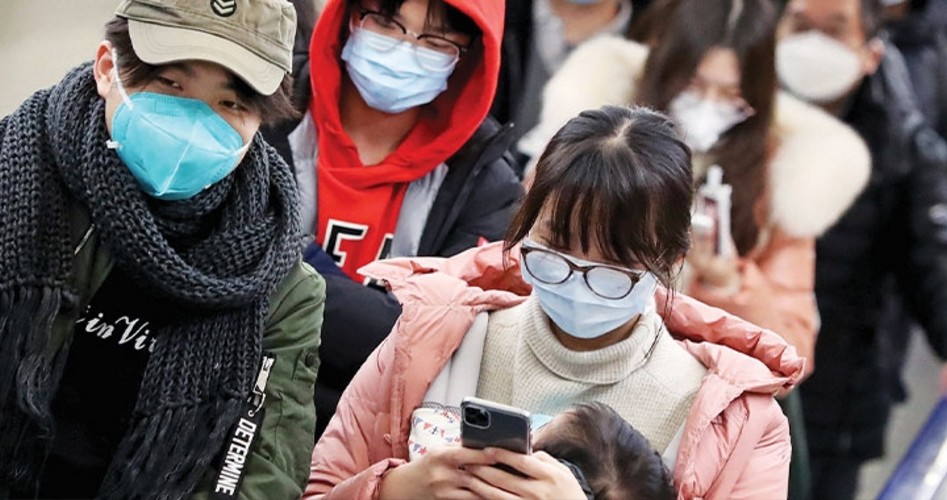Germ of Totalitarianism
On January 23, 2020, 11 million people were taken captive. On that day, the communist government of the People’s Republic of China decided to quarantine the entire city of Wuhan in response to the spread of a novel coronavirus that appeared to have originated there the previous month. In a single day, China’s seventh-largest city (with three million people more than New York City) was effectively turned into a vast open-air concentration camp, with all air, rail, and road traffic out of the city ended. Over the next few days, the quarantine was extended over a number of other nearby cities. By January 25, almost 50 million people — a population roughly equivalent to the combined populations of California and Georgia — were under quarantine, prevented by their government from leaving their cities. At the time of this writing, that number has grown to about 60 million, including most of Hubei Province and also the city of Wenzhou on China’s southeast coast. In Wuhan, all cars were banned from the downtown area, and city authorities rushed to erect a makeshift hospital to accommodate an anticipated influx of patients. The American government managed to evacuate its consular staff and many American citizens from Wuhan. In the weeks since these initial measures, these have expanded to include the entire enormous province of Hubei, where it is now prohibited to drive any private vehicle anywhere, except for crucial delivery of supplies. In Wenzhou, in coastal Zhejiang Province, the several million residents are prohibited from leaving their houses more than once a week, when they are permitted a single shopping trip.
Quarantines have been practiced for centuries, but never before on a scale anywhere near what is being carried out right now on the Chinese mainland. The Chinese government is methodically shutting down many forms of travel all over the country, prohibiting all group tours, for example. Tens of millions of Chinese have canceled vacation plans during the Chinese New Year holiday. The usually busy airports and train stations are mostly devoid of activity, as all but a handful of flights and trains — including China’s vaunted bullet trains — have been canceled. Millions of breath masks have been sold, and the streets of most major cities are practically empty of cars and pedestrians alike. Those people who do venture out mostly wear surgical masks. Anyone with flu- or cold-like symptoms is subject to involuntary quarantine. In a word, panic and mass hysteria, fanned by the actions of the government, are the order of the day.
What is the dreaded new coronavirus, now officially called COVID-19? In spite of the scary-sounding name, it is essentially a type of common cold, albeit one packing a little more punch than the usual varieties. So far, it is unclear whether this particular strain is even as dangerous as the annual influenza bouts that take a predictable global toll on the aged and infirm. Nearly every known victim so far has been over 60 years old, typical of influenza and other pathologies that often induce pneumonia and other secondary infections in those with weakened immune systems. Added to this is the fact, little known outside of China, that most Chinese do not understand the relationship between keeping warm and avoiding (or mitigating) illness. Most Chinese believe that fresh air, even in the dead of winter, is a key to good health; consequently, the first thing that Chinese do when a person falls ill — at home or in hospital rooms — is open all the windows, even if the outside temperature is below freezing. Many Chinese also despise artificial heating because it dries out the air and is allegedly bad for the skin. Thus in China, a rather unique combination of cultural aversion to “inside air” and to indoor heating has created optimal circumstances for the spread of diseases such as influenza and the Wuhan coronavirus during the cold Chinese winter months.
JBS Member or ShopJBS.org Customer?
Sign in with your ShopJBS.org account username and password or use that login to subscribe.

 Subscribe Now
Subscribe Now
- 24 Issues Per Year
- Digital Edition Access
- Exclusive Subscriber Content
- Audio provided for all articles
- Unlimited access to past issues
- Cancel anytime.
- Renews automatically

 Subscribe Now
Subscribe Now
- 24 Issues Per Year
- Print edition delivery (USA)
*Available Outside USA - Digital Edition Access
- Exclusive Subscriber Content
- Audio provided for all articles
- Unlimited access to past issues
- Cancel anytime.
- Renews automatically


